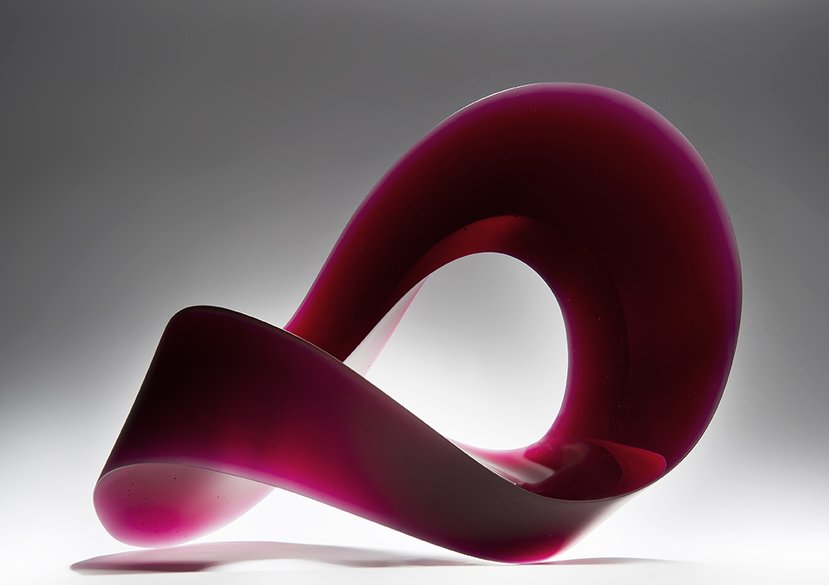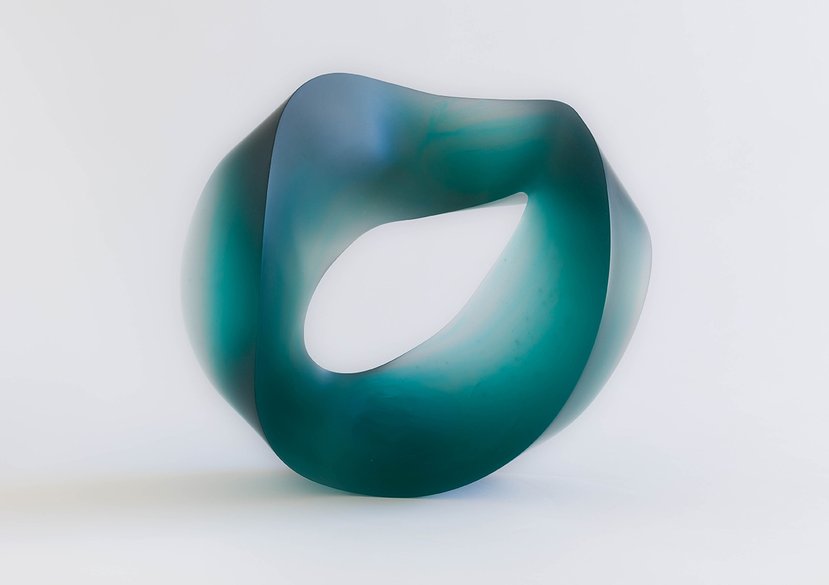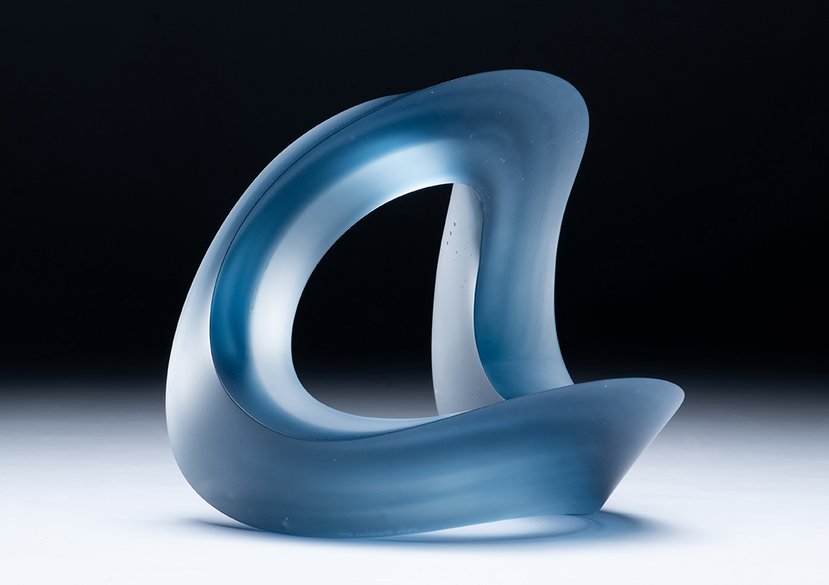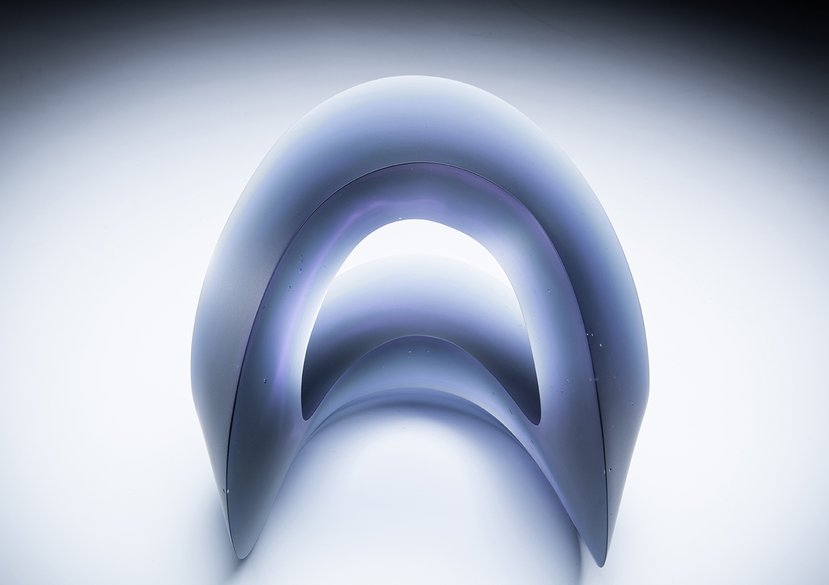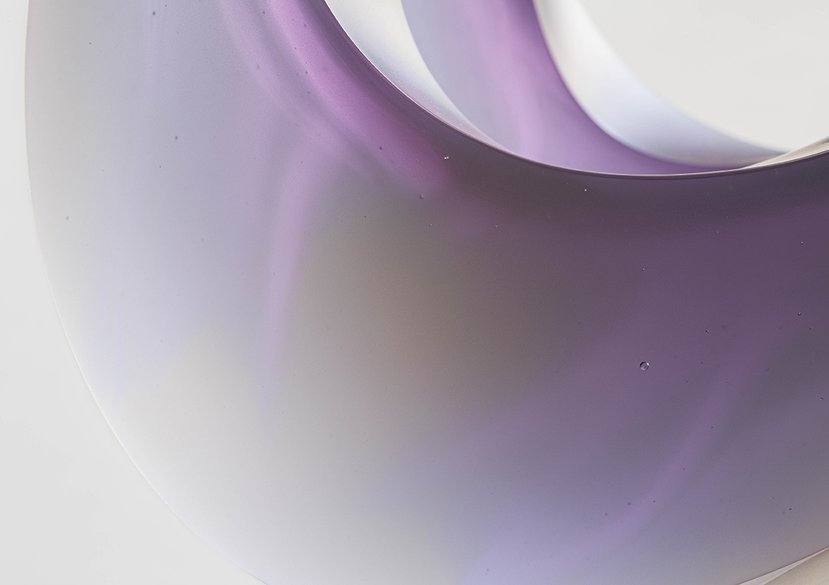
Dr Heike Brachlow is an internationally recognised artist whose work focuses on the interaction of colour, form and light in cast glass sculpture.
Born and raised in Munich, Germany, she received her BA in Glass in 2004 from the University of Wolverhampton, her MA in 2006 and her PhD in 2012 from the Royal College of Art in London. She works as a self-employed artist from her studio in the Lake District, as well as teaching at the RCA and institutions such as Pilchuck Glass School and the Studio of the Corning Museum of Glass. Heike’s work is represented in public and private collections in Europe, the USA, China, Australia and India.
Key details
School, Centre or Area
Expertise
Gallery
More information
Research interests
Heike’s research explores of the interaction of colour, form and light in solid glass sculpture. Drawing on Czech cast glass, particularly the work of Stanislav Libensky and Jaroslava Brychtova, in combination with extensive colour testing, she is working with forms designed to achieve variations in hue and value in solid objects made from a single transparent glass colour. Her recent work is exploring the flow of glass during the casting process, made visible through use of different colours in a single object. She is interested in material phenomena, process/technique and, to a lesser extent, material culture. Heike is part of the Material Engagements Research Cluster.
Practice
Colour Connections, solo exhibition shown at Traver Gallery in Seattle, USA in September 2022.
This exhibition represents the beginning of a new avenue of exploration: subtle flow patterns, achieved through us of two or more colours during the casting process. Depending on small variations in the set-up of reservoirs and placement of coloured glass during the casting process, as well as the characteristics of the coloured glasses themselves and the forms used, different patterns emerge during the process.
An Empirical Approach to Colour in Glass, Arts 2019, 8 (1), 15. https://doi.org/10.3390/arts8010015
This paper focuses on the characteristics and use of transparent homogenous coloured glass for cast glass sculpture. It provides an overview of glass colouring agents and their characteristics, and establishes factors that influence the appearance of colour in glass. Methods to visually evaluate appropriate colour density for a given form are discussed, as well as essential characteristics that a form must possess to achieve results within a density threshold area, where coloured glass changes in value and/or hue between thick and thin sections.
Art of Glass, group exhibition 2018 at the National Museum Scotland, traveling to the National Centre for Craft & Design.
For this exhibition, Brachlow has created three new works focussing specifically on the colour grey. The predominant colouring agent in grey glass, nickel, has two interesting characteristics: it subtly changes hue in different types of illumination, and it strongly changes in both colour density and hue if the physical thickness of the glass varies. Brachlow’s research resulted in elongated shapes with pronounced thick-thin variations, emphasised by the appropriate colour density for each form, aiming to achieve multiple shades and sometimes multiple hues within the work. A combination of surface finishes is used to selectively reveal and obscure views inside the glass, and to focus and diffuse light.
Chaos Theory, solo exhibition shown at The Gallery at Parndon Mill in England and Traver Gallery in the USA during 2016.
The works shown in Chaos Theory are further explorations of the concept of ‘D-forms’ and build on works developed during a residency at the Australian National University in Canberra in January 2015 and shown in the solo exhibition Colour through Form at Traver Gallery in 2015. Continuing the exploration of the interaction of colour and form, the exhibition contains three works in opaline glass, a glass that develops its colour during the firing process and can appear anywhere on a scale from clear to opaque depending on the exact firing cycle. Two works are almost completely opaque, the second white with thin edges appearing a translucent blue. The third is translucent throughout.
Research funding
Arts Council & British Council Artists International Development Fund Grant 2015
Awards
Glass Seller’s Arts and Crafts Award, British Glass Biennale 2017
Jerwood Makers Open Award, London 2011
Arts and Humanities Research Council Postgraduate Award for PhD studies 2007 – 2009
Current and recent projects
Colour Connections, solo exhibition shown at Traver Gallery in Seattle, USA in September 2022.
This exhibition represents the beginning of a new avenue of exploration: subtle flow patterns, achieved through us of two or more colours during the casting process. Depending on small variations in the set-up of reservoirs and placement of coloured glass during the casting process, as well as the characteristics of the coloured glasses themselves and the forms used, different patterns emerge during the process.
An Empirical Approach to Colour in Glass, Arts 2019, 8 (1), 15. https://doi.org/10.3390/arts8010015
This paper focuses on the characteristics and use of transparent homogenous coloured glass for cast glass sculpture. It provides an overview of glass colouring agents and their characteristics, and establishes factors that influence the appearance of colour in glass. Methods to visually evaluate appropriate colour density for a given form are discussed, as well as essential characteristics that a form must possess to achieve results within a density threshold area, where coloured glass changes in value and/or hue between thick and thin sections.
Art of Glass, group exhibition 2018 at the National Museum Scotland, traveling to the National Centre for Craft & Design.
For this exhibition, Brachlow has created three new works focussing specifically on the colour grey. The predominant colouring agent in grey glass, nickel, has two interesting characteristics: it subtly changes hue in different types of illumination, and it strongly changes in both colour density and hue if the physical thickness of the glass varies. Brachlow’s research resulted in elongated shapes with pronounced thick-thin variations, emphasised by the appropriate colour density for each form, aiming to achieve multiple shades and sometimes multiple hues within the work. A combination of surface finishes is used to selectively reveal and obscure views inside the glass, and to focus and diffuse light.
Chaos Theory, solo exhibition shown at The Gallery at Parndon Mill in England and Traver Gallery in the USA during 2016.
The works shown in Chaos Theory are further explorations of the concept of ‘D-forms’ and build on works developed during a residency at the Australian National University in Canberra in January 2015 and shown in the solo exhibition Colour through Form at Traver Gallery in 2015. Continuing the exploration of the interaction of colour and form, the exhibition contains three works in opaline glass, a glass that develops its colour during the firing process and can appear anywhere on a scale from clear to opaque depending on the exact firing cycle. Two works are almost completely opaque, the second white with thin edges appearing a translucent blue. The third is translucent throughout.
Publications, exhibitions, other outcomes
Solo Exhibitions
2022 Colour Connections, Traver Gallery, Seattle, WA
2018 Colour Reflections, Traver Gallery, Seattle, WA
2016 Chaos Theory, Traver Gallery, Seattle, USA, and The Gallery at Parndon Mill, Harlow, UK
2015 Solo Show Colour through Form, Traver Gallery, Seattle, USA
2012 Solo Show Six Impossible Things, Bullseye Gallery, Portland, Oregon and The Gallery at Parndon Mill, Harlow, UK
2007 Barrier, installation at Moorhouse and One London Wall, London
Selected Group Exhibitions
2022 British Glass Biennale, Stourbridge, UK (2006, 2010, 2012, 2015, 2017, 2019)
2022 The Coburg Prize for Contemporary Glass 2022, Veste Coburg & European Museum of Modern Glass, Germany
2022 Bullseye TG: Transitions in Kiln Glass, Bellevue Arts Museum, USA
2021 The Power of Material: From Virtual to Physical, Design Museum, London
2020 Collect with Bullseye Projects, Somerset house, London
2019 Collect, Bullseye Projects, Saatchi Gallery, London (2010, 2017)
2018 Art of Glass, National Museum of Scotland, Edinburgh
2017 Form + Motion at the UK Pavilion at the 10th Cheongju Craft Biennale, Korea
2016 Connections, Scottish Gallery, Edinburgh
2015 Objects in Flux, Boston Museum of Fine Arts, Boston, USA
2015 Visiting Artist Showcase, ANU Gallery, Canberra, Australia
2014 International Contemporary Glass Art Exhibition, Hangzhou, China
2013 SOFA Chicago, presented by Bullseye Gallery, Portland, Oregon, (2008)
2011 Jerwood Makers Open exhibition, Jerwood Space, London
2010 Master der Moderne, Handwerksmesse, Munich
2009 Space – Time, National Glass Centre, Sunderland, UK
2008 e-merge 2008, Bullseye Resource Center Gallery, Portland, Oregon
2007 New Faces – Crafts Council Showcase, Victoria & Albert Museum, London
2006 Discovery, Kullo Children's Gallery, Tallinn, Estonia
2005 Kyoto Art Center, Japan
Selected Collections
Victoria & Albert Museum, London
The National Museums Scotland, Edinburgh (Dan Klein & Alan J. Poole Collection)
Museum of Glass, Tacoma, Washington, USA
Chrysler Museum of Art, Virginia, USA
Imagine Museum, Florida, USA
Glasmuseum Hentrich, Duesseldorf, Germany
Ernsting Foundation, Glasmuseum Alter Hof Herding, Coesfeld, Germany
Barbara-Achilles Foundation, Hamburg, Germany
European Museum of Modern Glass, Art Collection of the Veste Coburg, Rodental, Germany
China Academy of Art, Hangzhou, China
Publications
Brachlow, H. (2019) An Empirical Approach to Colour in Glass, Arts 8, no. 1: 15. https://doi.org/10.3390/arts8010015
Brachlow, H. (2008) On Colour, Glass and Light in Craig, Blanche (ed.) Contemporary Glass. London: Black Dog Publishing
Published Conference Papers
Brachlow, H. (2019) What can go wrong and how to fix it. Journal of the 2019 Glass Art Society Conference in St Petersburg, Florida.
Brachlow, H. (2010) Shaping Colour: Density, Light and Form in Solid Glass Sculpture, in Creativity and Innovation in Glass: Proceedings of the International Glass Symposium, University of Wolverhampton.
Presented Conference Papers
Brachlow, H. (2015) The appearance of colour in glass. Ausglass Conference, Adelaide, Australia
Brachlow, H. (2009) On Colour, Glass and Light, BECon conference: Filling the Void: Kilncasting, Portland, OR, USA

